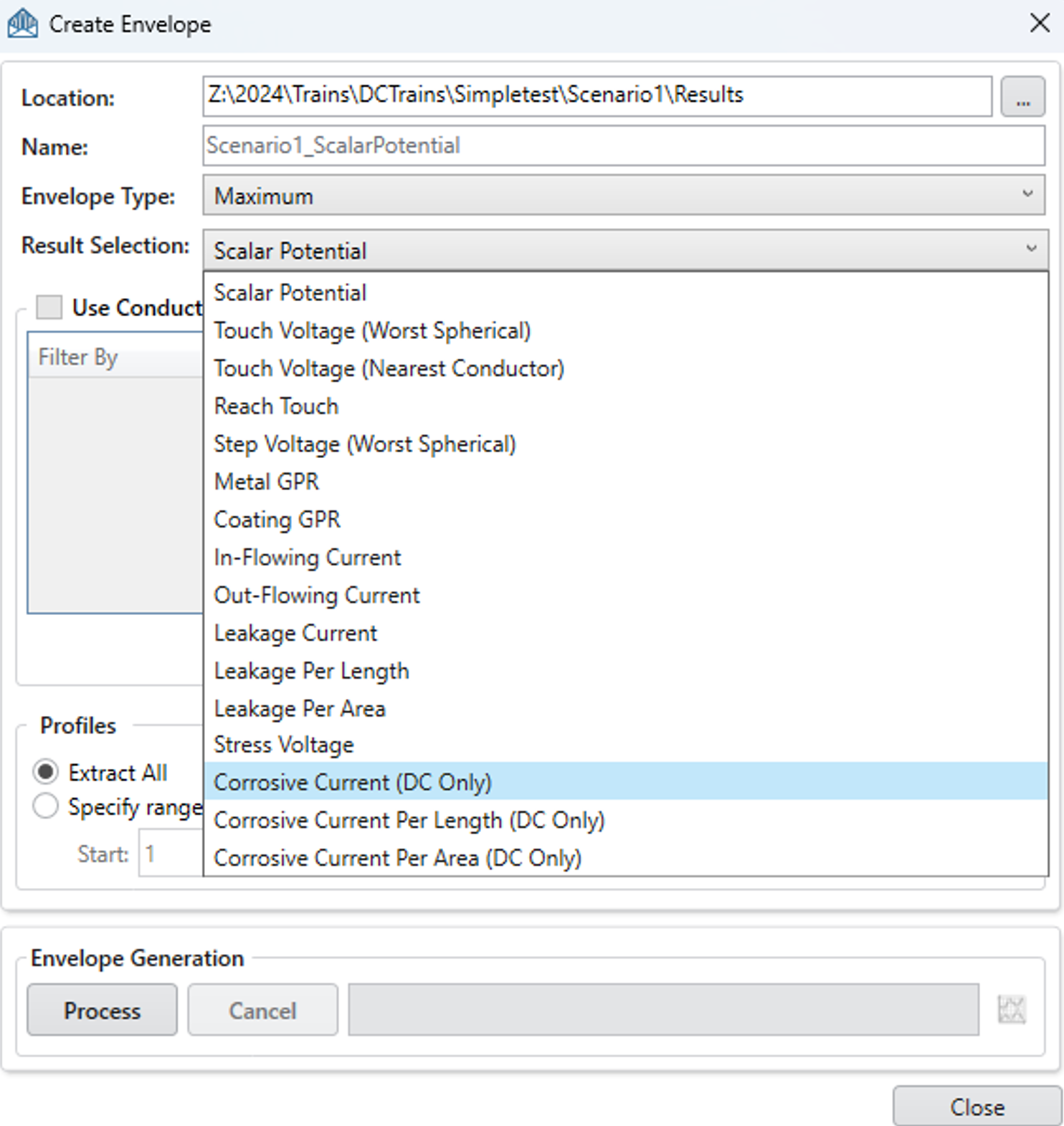Several traction systems, such as subways, light rail systems, and tramways are using direct
current (DC) instead of the alternating current (AC) more common for higher load traction
systems. Typically, these will be installed in urban environment, where many bare metallic assets
may be buried. While the DC tractions systems are designed to minimize stray currents, these can
be very detrimental to the buried metallic infrastructure because they can cause severe corrosion
issues. DC stary current entering a metallic asset, bare or coated, will not cause any loss of metal.
Only the current leaving the metallic structure to re-enter the electrolytic medium (i.e. the soil)
will corrode the asset. Since trains position and current consumption varies, stray current will
leave and re-enter nearby exposed metallic structures at various locations and with a varying
magnitude. A new quantity named Corrosive Current can now be extracted from the Create
Envelope feature, which computes only the DC current that leaks out of a conductor, ignoring any
current leaking in. It is only accessible when the frequency of the SESTrainSimulator template is
set to zero. The maximum, minimum average and RMS envelope of the corrosive current can be
requested, and the format can be per segment, per length or per area.

